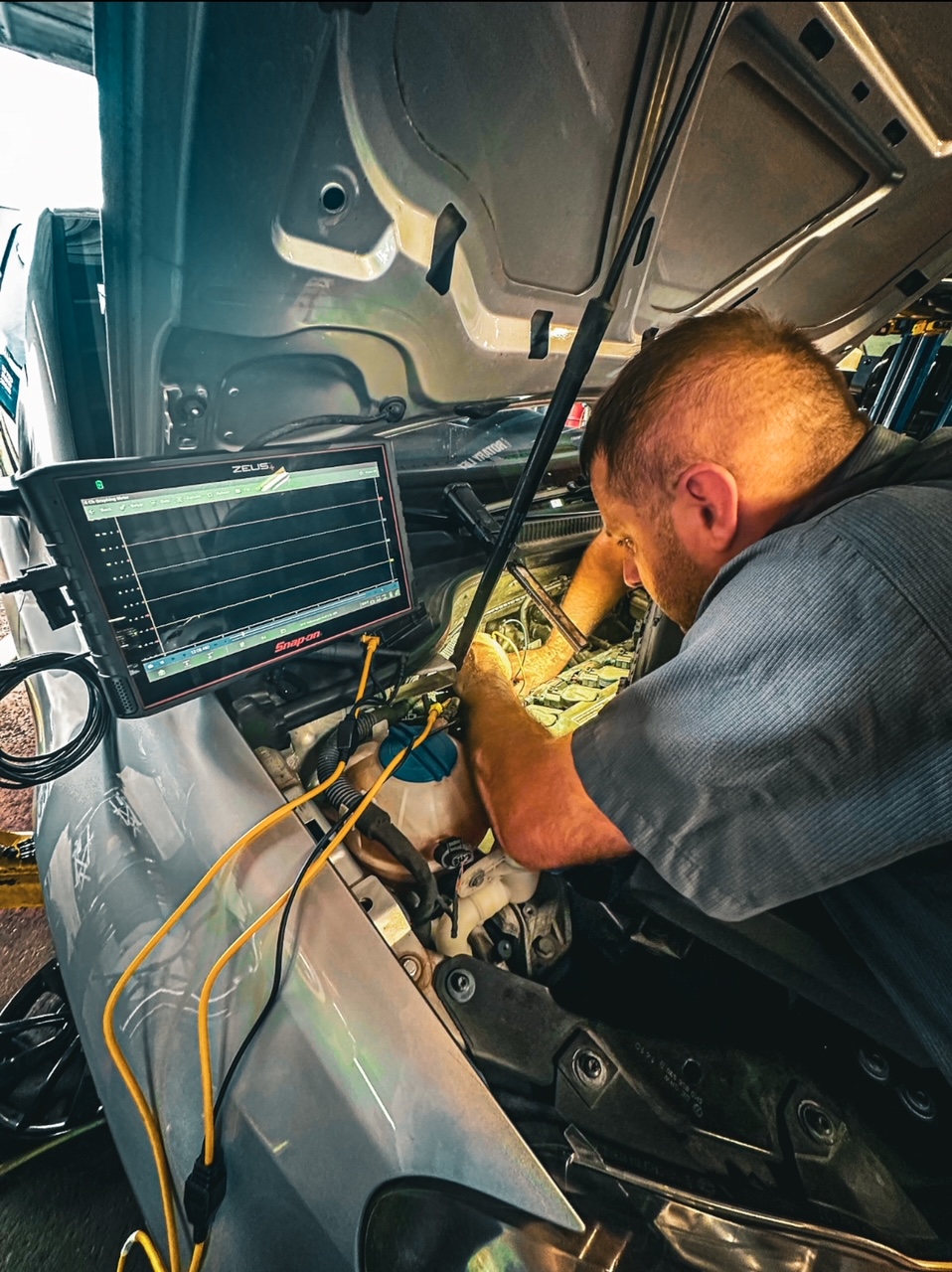Why Is The Car With Squiggly Lines and The ABS Light on Dash
Hey there everyone! Welcome back to our blog page! We recently had a vehicle in the shop that had a few dash lights on on a Volkswagen. We thought it would be a good idea to dive into two of them to see what kind of diagnosing extent a technician may need to go through to find the cause of the problem.

(photo taken from actual digital vehicle inspection)
 In this vehicle, the customer had two lights on together on the dash, the ABS light and the "car with squiggly lines" better known as the Traction Control light. Now, before we get into it, this is just a scenario for what we found with this vehicle, this does not necessarily mean that if these two lights are on together, that this will always be the same diagnosis. It could be something entirely different, so just keep that in mind.
In this vehicle, the customer had two lights on together on the dash, the ABS light and the "car with squiggly lines" better known as the Traction Control light. Now, before we get into it, this is just a scenario for what we found with this vehicle, this does not necessarily mean that if these two lights are on together, that this will always be the same diagnosis. It could be something entirely different, so just keep that in mind.
Upon pulling the codes to this vehicle, the codes lead us to a sensor or circuit problem. The sensors it was referring to, detect wheel speed and then send that information back to the ABS module to determine the next function. Our Master technicians Jeff and Gene were testing the circuits and the sensors to see which part had failed.

Now, you might be wondering, what is an ABS Speed Sensor? So let's dive into that next...
What is an ABS Speed Sensor?
ABS speed sensors are devices that monitor the rotational speed of each wheel on a vehicle. They send this information to the ABS control module, which uses the data to prevent the wheels from locking up during hard braking. By modulating brake pressure, the ABS system allows drivers to maintain steering control, reducing the risk of skidding and accidents.
How ABS Speed Sensors Work
ABS speed sensors come in two main types: active (Hall Effect) sensors and passive sensors.
Active Sensors: These sensors use a magnetic field to generate a voltage signal based on wheel speed. They require power from the vehicle’s electrical system and are highly accurate.
Passive Sensors: These sensors generate an alternating current (AC) voltage signal as the wheel spins. They do not require an external power source and rely on the movement of a toothed wheel to create the necessary voltage.
When a driver applies the brakes, the ABS system monitors the wheel speeds through the sensors. If it detects a wheel is about to lock up, it reduces brake pressure to that wheel, allowing it to continue turning. This process happens rapidly, helping drivers maintain control in emergency situations.
Why ABS Speed Sensors Are Essential
Enhanced Safety: The primary purpose of ABS speed sensors is to improve safety. By preventing wheel lock-up during sudden stops, they help maintain steering control and reduce the likelihood of skidding or losing control. This is especially important on slippery surfaces like rain, ice, or snow.
Shorter Stopping Distances: ABS can significantly shorten stopping distances in certain conditions. By optimizing brake pressure, the system allows for maximum braking force without losing traction. This can be the difference between avoiding an accident and a collision.
Improved Vehicle Stability: ABS speed sensors contribute to overall vehicle stability during braking. By monitoring each wheel individually, the system can respond to varying conditions across different wheels, ensuring a more controlled and stable braking experience.
Real-Time Feedback: The information provided by ABS speed sensors is processed in real-time, allowing the ABS system to react instantly to changes in wheel speed. This quick response is crucial in emergency situations where every fraction of a second counts.
Confidence in Braking: Knowing that your vehicle is equipped with an ABS system that utilizes speed sensors can instill confidence in drivers. This peace of mind allows them to focus on the road ahead, knowing their vehicle can help prevent skidding and loss of control.

Conclusion
ABS speed sensors may be small components, but their impact on vehicle safety is immense. By preventing wheel lock-up and enhancing braking performance, they play a crucial role in modern automotive safety systems. Understanding the importance of these sensors not only highlights the technology behind safe driving but also emphasizes the need for regular vehicle maintenance.
To ensure your ABS system and speed sensors are functioning correctly, it’s essential to have your vehicle inspected regularly by a qualified mechanic. Proper maintenance will keep your ABS system in top condition, allowing you to enjoy safer, more confident driving. Remember, when it comes to safety on the road, every component counts!
If you like our content, find more fun ways to interact with us on:
🔹Facebook: http://www.facebook.com/AmericanImportAutoInc
🔹Instagram: http://www.instagram.com/americanimportautoinc/
🔹Pinterest: http://www.pinterest.com/americanimportautoinc/_created/
🔹LinkedIn: http://www.linkedin.com/company/american-import-auto-inc
🔹Website: http://www.americanimportrepair.com/